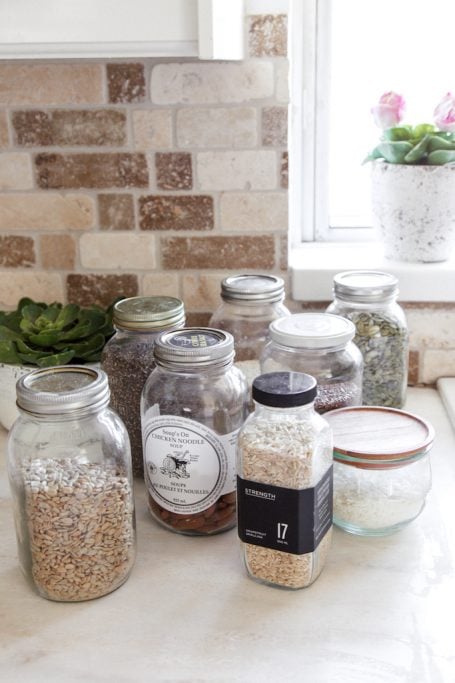Zero waste living is really hot right now. I think social media has played a part in putting this movement on the map, but what is zero waste? In this article, we are taking an in-depth look.
How did zero waste begin?
We’ve all seen the trash in the jar, made famous by the Queen of Zero-waste Bea Johnson, who has pretty much perfected it. I love her and everything she stands for but I simply can’t reach that goal and I am pretty sure most of my readers can’t either.
It’s utterly unattainable and in most cases, it can really turn people off to the concept of zero-waste living.
Sustainable living is not easy, society is simply not set up to help us reduce waste. We live in a consumer-driven world and that means we create a ton of WASTE. I bet you have quite a few trash cans in your home and think about how many garbage cans you come in contact with on a daily basis. All there to collect your waste. The average American produces three pounds of landfill-bound garbage a day!

Before we get to what is zero waste, it's important to understand how a landfill works and the issues with it. Most people think a landfill is a giant compost pile, it’s not. All kinds of waste end up in landfills. Food, hazardous materials like light bulbs, plastic, paper you name it. As more gets dumped on the pile, everything underneath it gets covered up and loses oxygen and sunlight, so nothing breaks down and in fact, studies have shown that you can find items in perfect condition buried from as far back as the 1940s.
Leachate and methane gas — are the two things we need to be concerned about in landfills.
Leachate generation is defined as "a major problem for municipal solid waste (MSW) landfills and causes significant threat to surface water and groundwater. Leachate results from precipitation entering the landfill from moisture that exists in the waste when it is composed".
It’s all the nasty, stinky stuff that pools at the bottom of a landfill, it’s toxic and leaches into the soil and groundwater.
Then you have methane gas! Methane gas is a greenhouse gas that "traps heat in our atmosphere and contributes to global warming".
And of course, there is the MAJOR issue of plastic. Plastic does not biodegrade, it photodegrades slowly by breaking down into tinier pieces over hundreds of years adding to the soil and water pollution.
So obviously landfills are good in theory, but they are proving to be a really major issue thanks to our over-consumption.
Seventy -five years ago, before the invention of single-use items, we lived a pretty trash-free existence.

So what is zero waste and its ultimate goal?
Zero waste is the simple (or not so simple) concept of creating no waste, sending nothing to landfills at all, or trying to live your life by creating as little waste as possible.
But it’s not always that easy! It's much more complicated and for that, we need to look at the history of the zero waste movement and go beyond what consumers can do to focus on how to reduce waste at the source.
The History of Zero Waste
Yes, Bea Johnson is a pioneer in the zero waste movement, but it was actually a chemist named Paul Palmer who in 1973 founded the Zero Waste Systems (ZWS) to recycle every kind of excess chemical after learning that electronics companies in silicone valley were "discarding enormous amounts of perfectly usable industrial chemicals".
According to Wikipedia "in 2008, Zero Waste was a term used to describe manufacturing and municipal waste management practices. Bea Johnson, decided to apply it to her household of 4" and essentially created the movement that it is today!
Zero Waste as a Lifestyle
In her book, Zero Waste Home, Bea Johnson illustrated how zero waste living can be applied to the individual actions each one of us can take by applying her 5 R’s of zero waste living, before the 5 R’s there were only 3, reduce, reuse and recycle, which were meant to educate people on waste, but if you really want to live a more sustainable life, you need to consider all 5R’s, here they are:
Refuse: the things you just don’t need like single-use plastic, disposable coffee cups, plastic produce bags, etc.
Reduce: this can mean donating items you no longer need or use, or reducing the number of things you buy and bring into the home. Stop buying so many clothes, and look for alternatives to replace plastic like glass or metal.
Reuse: Instead of throwing things out, reuse, upcycle or repurpose them. Shop second-hand as much as you can to give old things new life. Got glass jars? Use them to store foods.
Recycle: this is fourth on the list for a reason, do all three above before you get to this point. Get to know your recycling facility.
Rot: Compost your household waste.

